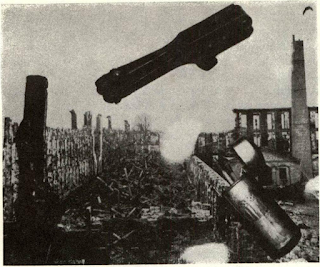It is odd that “the man who invented the revolver”
Ager, Williams, Vandenberg, these have faded into history. The repeating gun most remembered from the war, and yet one which had a very confusing record of use therein, is that of Dr. Richard Jordan Gatling. I had the pleasure of witnessing how effectively Dr. Gatling had builded when I attended a meeting of the American Ordnance Association at Aberdeen the fall of 1957 . Mounted on a testing stand was a small bundle of barrels, dwarfed in seeming firepower by the huge cannon flanking it. But when the gunner pushed the button and that mighty mite whirred into action with a high-pitched snarling roar so rapidly that no individual explosions could even be sensed, I knew I had witnessed not only the world’s fastest-firing machine gun, and the world’s heaviest gun in weight of metal fired (a ton and a half in one minute), but a gun that was directly inspired by the Civil War special artillery General Butler bought from Dr. Gatling. First of Gatling’s guns was bulky wheeled carriage “c...


Comments
Post a Comment